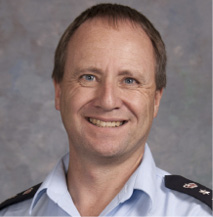
By Philip Campbell, New South Wales State Emergency Service

In 2015, a Churchill Fellowship was undertaken to investigate the media’s use of images of people undertaking risky actions during natural disaster events. The research considered if people were repeatedly exposed to such images were they likely, when in a similar position, to copy the action and act in an unsafe fashion rather than follow safety advice.
With $50 million spent annually in Australia on natural disaster public education and resilience-building campaigns, concern had been expressed by some agencies that media channels were publishing or broadcasting images of risky actions that contravened safety messaging. It was thought this may lead to imitative (copycat) behaviour. Not only might such imagery compromise public safety, but it placed at risk the significant investment by agencies and non-government organisations in public education campaigns.
The Fellowship involved a literature review and qualitative interviews with selected media channels, emergency services organisations, psychologists and communicators in New Zealand, Canada, the USA and England.
Few people have direct experience of a disaster and, over time, people’s exposure to disasters come from the media and online channels. Very little may come from interaction with emergency services organisations. Over time a ‘memory bank’ of images and actions of what to do in an emergency may be based on these images, which are weighted to those in the media. Media images usually show risky behaviours and rarely show positive and safe actions. This means the bank of images people draw on when at a stressed decision point is more likely to be, for example, people driving through floodwaters. This is at odds with safety messages that people wait for floodwaters to recede or take an alternate route. Images in the media may even present risky behaviour, such as playing in floodwaters, as fun or desirable.
In emergency situations people are under a high level of psychological stress. This can inhibit higher-order thinking and involve a shift towards visually-biased, lower-order thinking. To understand these psychological processes when people decide to enter, say, floodwaters and how media images could be a trigger to risky actions, risk communicators and psychologists with an interest in natural hazard risk communication were interviewed.
Media organisations play important roles in emergency events. They help disseminate critical safety and preparedness messaging and are a vital channel when emergencies arise. They provide public information and let people know what actions they may need to take. However, the tendency to focus on dramatic, sensational images, the showing of risky behaviour by people, and permitting frontline journalists to take risks and ignore safety and evacuation warnings, means they can work against the safety of people and responders. Understanding media culture and free press principles and getting media organisations to alter or reframe their actions requires a patient, inclusive and cooperative approach that respects the right of journalists to be at the scene of an emergency.
Informed by this Fellowship, the NSW SES engaged with all major media outlets in NSW to discuss the effect of media imagery on public behaviour. In addition, where images have been broadcast, the media outlet was contacted and asked to remove the image or refrain from similar images in the future. Most media have been understanding and cooperative, but with high churn of journalists, it is an ongoing process.
The Fellowship research also contributed to a major project into flood deaths. Preliminary work has been undertaken with several university schools of journalism to help students understand the issues related to use of images in disaster events.
The full report on this study is available on the Winston Churchill Memorial Trust website, www.churchilltrust.com.au/fellows/detail/3897/Philip+Campbell
Applications for Fellowships are open between February and May each year.